Bristow Procedure
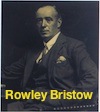
The Bristow procedure was originally described by Helfet in 1958, describing it after his mentor - Walter Rowley Bristow.
The procedure involves transferring the tip of the coracoid with the conjoined tenon under the subscapularis, so that it acts as an anterior stabiliser. In the original procedure the conjoined tendon was sutured to the subscapularis muscle, but later modifications involved fixing the coracoid tip to the anterior glenoid with a single screw.
A short incision is made extending distally from the coracoid in line with the delto-pectoral groove for 5cm:
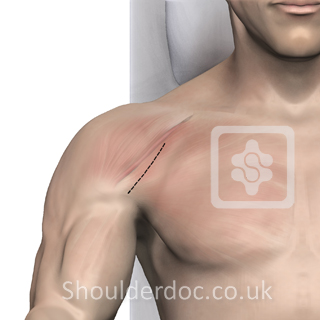
The delto-pectoral groove is identified and seperated to expose the coracoid and conjoined tendon:
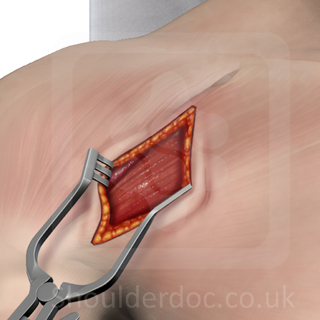
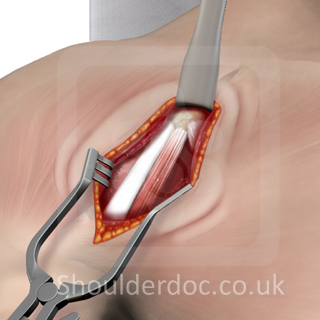
1cm of the tip of the coracoid is detached with the conjoined tendon
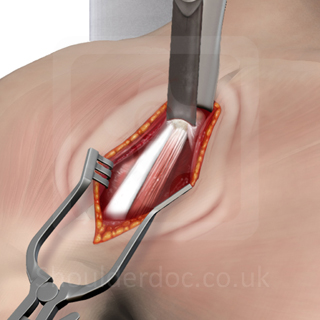
The subscapularis is split in the line of it's fibres
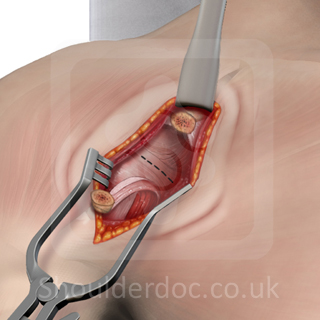
The coracoid is pre-drilled
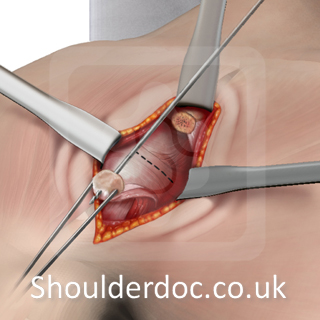
The subscapularis is split to expose the joint capsule and glenoid neck
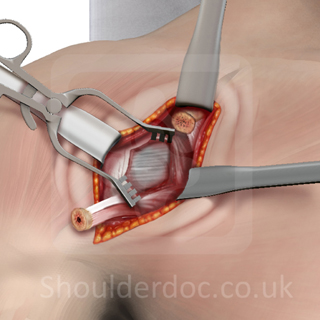
The glenohumeral joint is opened
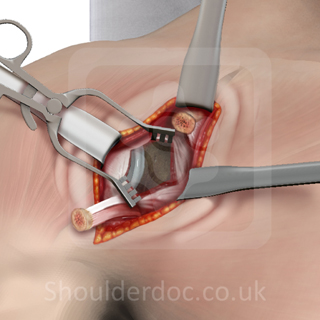
The coracoid is fixed with a single screw to the anterior glenoid neck
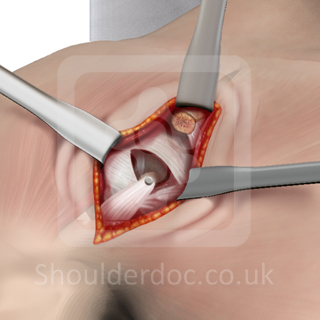
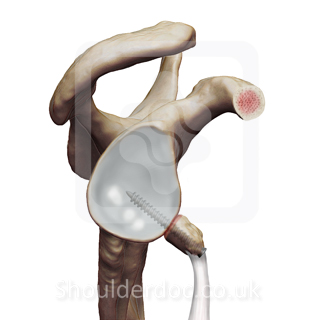
References:
- Helfet AJ. Coracoid transplantation for recurring dislocation of the shoulder. J Bone Joint Surg Br. May 1958;40-B(2):198-202.
- Schroder DT, Provencher MT, Mologne TS, Muldoon MP, Cox JS. The modified Bristow procedure for anterior shoulder instability: 26-year outcomes in Naval Academy midshipmen. Am J Sports Med. May 2006;34(5):778-86.


